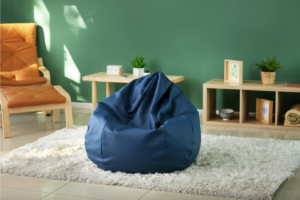It’s the end of the school year! Is your calendar filling up with fieldtrips, recitals, celebrations? Amongst the activity, are you and your child also feeling chaos, decisions, and multi emotions? It’s a bittersweet time. We honor and celebrate accomplishments that have been the year in the making, appreciate those that helped us to get to this place, and in the same deep breath, we feel a wave of angst, indecision, curiosity and confusion in thinking about the school year end transition. It is important for us to support children through their spring routine changes, and easy to do so!
Let’s get through these upcoming months. We can do this.
To make the most of the upcoming months, and most importantly help keep your child self regulated so they can actually enjoy or appreciate these times, try these 5 home strategies to support spring routine changes at the end of the school year.
CREATE A CHILD CALENDAR
- Print off a free calendar template online to use as your child’s personal calendar. Go to a discount store, or an office supply store and have your child pick out a calendar for their room or special space.
- Collect your list of activities (school calendar, teacher’s email of upcoming events, sports email, etc). With your child during a calm time, have your child pick out a pen or preferred marker.
- Talk through what’s coming up for your child’s schedule. Show your child how the calendar works. Slowly look through the activity dates, and write some on your child’s calendar. Filter out the main events as to not overwhelm (remember, this is your child’s calendar). Ask your child what he/she/they want on their calendar.
- BONUS: ask your child if there is something they need/want for that event to help self regulate. For example, if your child needs headphones during assemblies, have your child draw a pair of headphones on that date (or write it). Is there a special outfit or costume for that day? Write the word costume (or class shirt, or special accessory) on the calendar.

Why is a calendar important? To our visual and literal learners, it is essential to see what is concretely coming up. They find peace in consistency and knowing what’s coming. Our children need to have a heads up so that they can prepare their bodies for the changes. A calendar will help to support children through their spring routine changes. Having a personal calendar for your child also promotes confidence and feeling “important”. It gives a visual sense of control too.
WRITE IT OUT
Have a change to the schedule coming up? Write out the facts, be concrete and literal, write it from the child’s perspective, and keep it positive and brief. What will the activity look like? What changes should the child expect? Are there certain rules or procedures?  These are called social stories, and they help children learn the “script” or preteach what is going to happen. If you have a school team, ask for help in knowing about upcoming events.
These are called social stories, and they help children learn the “script” or preteach what is going to happen. If you have a school team, ask for help in knowing about upcoming events.
Get 3 social stories within a week! Contact me, let’s get started.
KEEP ROUTINES CONSISTENT
As schedules and events change in our child’s environment (out of the child’s and our control), we need to support our child’s physical body. Serve healthy unprocessed foods, encourage water, and set up routines to get predictable sleep. Enforce calming bedtime routines especially the night before events. Keep daily routines as consistent as possible. This stable foundation will help your child stay regulated, and support them through their spring routine changes.
BE AWARE OF YOUR EMOTIONS
Adults feel proud, excited, and want to celebrate our young one’s accomplishments. If you want your child to feel supported and celebrated think about how YOUR child wants to be celebrated (this is about them after all, not us). For example, my sensory sensitive child does not like a lot of attention, hoopla, balloons and big excited reactions. So after a recital, instead of a bouquet of balloons and lots of verbal excitement and cheering, a big hug, kind words affirming her good job, and a special small gift or treat is appreciated. If your goal is to celebrate them and make them feel good, consider what THEY like, not what the parents want.
SET UP THE ENVIRONMENT
Your child’s school and activity environment will be fast paced, sensory saturated, and buzzing with energy. Set up a calming and relaxing environment at home. Environment set up will support children through their spring routine changes. Try these:
- Add a beanbag, a comfy pillow, or a soft blanket to your child’s favorite place in your home. Designate it as an electronics free zone. Want a step by step guide? Here you go!
- Try calming essential oils such as Lavender, Serenity paired with Balance (for example, I use doTerra brand, no affiliate linked, it’s just my personal preference), and Cedarwood are soothing. Use 1-2 drops in a diffuser in the spaces where the child is in the evening. Use Ylang Ylang or Lavendar in a diffuser overnight for soothing vibes.
Diffuse essential oils and reduce screens.
- Reduce electronics and screen activity. Encourage non screen activities (board games, puzzles, reading, drawing, building blocks) to reduce the 5G electromagnetic waves and blue light that will impact and keep brains alert and distracted.
- Model self care. Take moments to relax, take a bath, read a book.
- Thanks for reading! Here’s a 27 page self care ebook to love and support self care.
Happy Spring!



